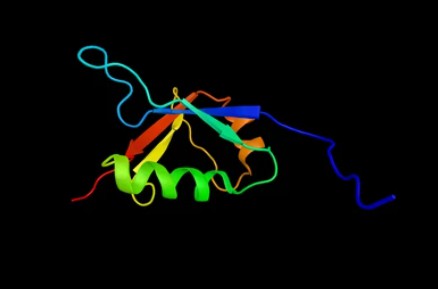Ubiquitin-like Modifiers (UBLs) and Regulators
About Ubiquitin-like Modifiers (UBLs) and Regulators
Post-translational protein regulation fine-tunes cellular function and involves a wide range of modifications, including ubiquitin and ubiquitin-like modifiers (Ubls). Similar to ubiquitin, Ubls are small proteins that covalently attach to target proteins, thereby regulating their stability, localization, and interaction with other molecules. The dynamic balance of Ubl binding and removal determines the fate of target substrates, which in turn regulates a variety of cellular processes, including protein degradation, DNA repair, signaling, and cell-cycle regulation. The mechanism of the Ubl pathway and its biological roles have been largely defined in yeast, plant, and mammalian cells. Understanding the roles and mechanisms of UBL and regulators is critical to unraveling the complexity of cellular processes and their impact on human health and disease.
There is a growing family of ubiquitin-like proteins (Ubl) that modify cellular targets in parallel but distinct pathways from ubiquitin. These alternative modifiers include SUMO (Sentrin, Smt3 in yeast), NEDD8 (Rub1 in yeast), ISG15 (UCRP), APG8, APG12, FAT10, Ufm1, URM1, and Hub1. These related molecules have novel functions and affect a variety of biological processes.

Functional Mechanisms of Ubiquitin-like Modifiers (UBLs) and Regulators
There is also cross-regulation between the various affixation pathways, as some proteins can be modified by more than one Ubl, sometimes even on the same lysine residue. For example, SUMO modification is often the opposite of ubiquitination and serves to stabilize the protein substrate. Proteins affixed to Ubl are usually not degraded by the proteasome but function in a variety of regulatory activities. Ubl attachment may alter substrate conformation, affect the affinity of ligands or other interacting molecules, alter substrate localization, and affect protein stability.
Ubl is structurally similar to ubiquitin and is processed, activated, affixed, and released from the affix by enzymatic steps similar to the corresponding mechanism for ubiquitin. Ubl is also translated using C-terminal extensions that are processed to expose invariant C-terminal LRGGs. These modifiers have their specific E1 (activating), E2 (conjugating), and E3 (ligating) enzymes, which bind Ubl to intracellular targets. These conjugates can be reversed by Ubl-specific peptidases by a mechanism similar to that of deubiquitinating enzymes.
Available Resources of Ubiquitin-like Modifiers (UBLs) and Regulators
Creative BioMart offers a comprehensive range of ubiquitin-like modifiers (UBLs) and regulators products, including Ubiquitin-like Modifiers (UBLs) and Regulators-related products, including high-quality recombinant proteins, cell & tissue lysates, protein pre-coupled magnetic beads, and other products, as well as first-class recombinant proteins. Ubiquitin-like Modifiers (UBLs) and Regulators-related products, including high-quality recombinant proteins, cell & tissue lysates, protein pre-coupled magnetic beads, and other products, as well as first-class customized contract research services. We provide customers with the following series of ubiquitin-like modifiers (UBLs) and regulators-related products.
Creative BioMart also provides customers with ubiquitin-like modifiers (UBLs) and regulators-related signaling pathways, protein functions, interactions proteins, research areas, and other resources to support the study of various biological processes and pathways. Please note that the product types and resources of each ubiquitin-like modifier and regulator are different, please contact us with any questions or requests.
Ubiquitin-like modifiers (UBLs) and regulators play critical roles in cellular processes that regulate protein stability, DNA repair, and signaling. modification of proteins by UBL dynamically controls cellular function, and dysregulation of the UBL pathway has been implicated in a wide range of diseases, including cancer, neurodegeneration, and immune disorders. Further research into the roles and mechanisms of UBL and regulatory factors is expected to reveal new insights into cellular physiology and the development of targeted therapeutic strategies. Creative BioMart provides researchers with a wide range of resources and tools to support UBL research, enabling the exploration of its mechanistic and functional implications and expanding the potential applications of UBL in fields such as biology and biomedicine.


